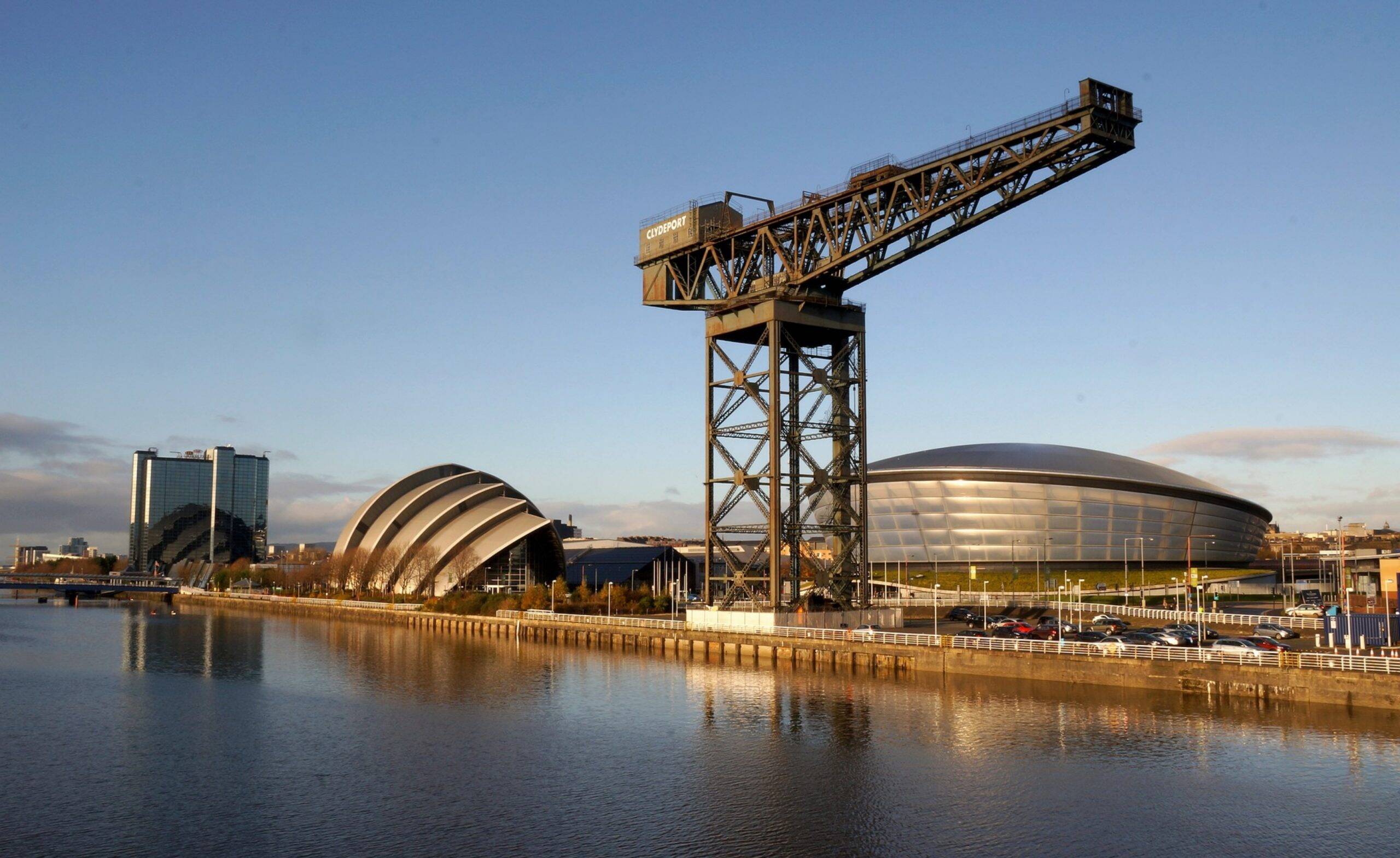You’ve reached your limit!
To continue enjoying Utility Week Innovate, brought to you in association with Utility Week Live or gain unlimited Utility Week site access choose the option that applies to you below:
Register to access Utility Week Innovate
- Get the latest insight on frontline business challenges
- Receive specialist sector newsletters to keep you informed
- Access our Utility Week Innovate content for free
- Join us in bringing collaborative innovation to life at Utility Week Live

Icebreaker One CEO Gavin Starks explains how lessons in standardisation and data sharing from open banking can drive the energy sector towards net zero – and empower it to harness an explosion of green innovation.
Launched “to make data work harder to help deliver net zero” in the words of CEO Gavin Starks, open data venture Icebreaker One set out to facilitate financial, engineering and environmental data sharing between firms and therefore steer the next raft of net zero decisions in the energy sector – and eventually beyond.
Starks founded Icebreaker One having co-chaired the development of the transformative open banking standard, set up the Open Data Institute with Sir Tim Berners-Lee, and run a company – backed to the tune of £12 million in venture capital – aggregating different methods of carbon footprinting.
And in just over 18 months, the vessel for energy data change has made unexpected progress – “we’re two years ahead of where I thought we’d be,” Starks tells Utility Week Innovate.
 Hot off the Green Zone at COP26 – where Lord Maude of Horsham compared the importance Icebreaker One’s national data infrastructure to that of roads, rail, water and broadband networks – and steered by the likes of BEIS and Innovate UK, the project continues to plot a course towards energy data standardization.
Hot off the Green Zone at COP26 – where Lord Maude of Horsham compared the importance Icebreaker One’s national data infrastructure to that of roads, rail, water and broadband networks – and steered by the likes of BEIS and Innovate UK, the project continues to plot a course towards energy data standardization.
“If you don’t end up with market cohesion that probably leads us into a path where we don’t deliver our net zero targets,” Starks says.
What’s more, Starks explains that there has been an unforeseen international context for Icebreaker One, largely through its role in Mission Innovation – a global initiative to “catalyze action and investment in research, development and demonstration to make clean energy affordable, attractive and accessible”.
The group, co-led by Italy, China and the UK and comprising 22 countries and the European Commission, formed to help deliver the Paris agreement and published a report at COP26. It counts Icebreaker One among its core mission members, alongside Saudi Arabia’s ministry of energy, the National Grid and India’s Department of Science and Technology.
“China’s doing the renewables, Italy’s looking at flex markets, the UK’s role is systems integration, data, and digitalization,” Starks explains. “We’ve taken open energy and dropped it right into the bucket. There’s a real alignment. This didn’t exist a year ago and we’ve been at the right place at the right time.
“The goal of this is to demonstrate that by 2030, power systems in different geographies and climates are able to effectively integrate 100% of their renewable energies in the generation mix. Data and interoperability is one of the pillars of work, the UK is leading it, and open energy is in the mix.”
‘Not a technology company’
However, Starks admits to being “a bit surprised” at the lack of search engine capability and data standardization in UK energy at present. “Our view is there’s some really baseline plumbing that we’re doing where data discovery is a problem,” he says.
“If you were to say ‘what’s an inventory of all the energy data in the UK? We don’t know – nobody has been able to answer that question. Does a company even know how much data it’s got at the moment? Probably not – and that’s not specific to energy.
 “Every company has data that it probably shouldn’t have or doesn’t have data people think they should – and that’s where we’ve established this access control layer,” Starks explains. “Icebreaker One doesn’t store any data. We store the metadata that describes the data and the permissions.”
“Every company has data that it probably shouldn’t have or doesn’t have data people think they should – and that’s where we’ve established this access control layer,” Starks explains. “Icebreaker One doesn’t store any data. We store the metadata that describes the data and the permissions.”
At the heart of Icebreaker One’s approach is to gradually increase the size of the UK’s open energy data ecosystem to incorporate firms that may want common access and agreeing a standard method of expansion within policies and guardrails that ensure each firm’s data is consistent and comparable.
“We’ve mapped out over 9,000 companies in the energy system in the UK – are you going to do bilateral contracts with each one of them? Is each company going to have its own software as a service solution? While that can be automated, you’ve still got to sign up to dozens of different terms and conditions, and that’s just a lengthy process and is going to introduce friction.”
On this point, Starks draws comparison with the rollout of open banking. “The banks said, ‘well, we’ve got application programming interfaces, we’re doing data sharing already, why do we need this thing?’ But it’s not about you, it’s about us – all of us creating cohesion and interoperability across the whole market.
“So rather than having dozens, hundreds, or even thousands, of integration points all doing things differently, you’ve got standardized ways of achieving that. We’re not a technology company from that point of view, we’re taking existing bits of technology and plugging them together.”
‘Proven blueprint’ from open banking
 Established as a nonprofit – “to occupy a space that nobody else really wanted to,” Starks claims – Icebreaker One functions independently of industry and government, much like it’s CEO’s work at the Open Data Institute and in open banking. “With Treasury backing, open banking opened up secure access to shared financial data,” he explains. “It has since transformed the fintech sector, creating tens of billions of pounds in value.”
Established as a nonprofit – “to occupy a space that nobody else really wanted to,” Starks claims – Icebreaker One functions independently of industry and government, much like it’s CEO’s work at the Open Data Institute and in open banking. “With Treasury backing, open banking opened up secure access to shared financial data,” he explains. “It has since transformed the fintech sector, creating tens of billions of pounds in value.”
This “proven blueprint” for market-wide data sharing within a common framework can subsequently be applied to the most relevant sectors to climate change, Starks adds, explaining that working with to develop open standards will unlock access to shared data – essential in the delivery of a “green industrial revolution”.
“Energy’s at the top of that list – obviously – but as are water, transport, agriculture and the built world. And so we’re looking at all of those areas and have been trying to work through the primary use cases here for market-wide data sharing.
“When you look at the emergent landscape of millions of assets being generators, or stores of energy – whether that’s a wind turbine, or an electric vehicle – and millions of assets acting on the demand side and also as an energy store, you end up with a very complex problem.
“Our purpose is to act as a catalyst, bring industry together and say if we’re going to pick data standards, let’s act as a way of gathering people around particular use cases whether that’s flex markets, smart meters, electric vehicles – and let’s make it happen.”

Cultural challenge
For Starks, creating an open web of energy data necessitates a seismic shift in business behaviors – especially when handling “harder” commercial data and deciding whether to collect or connect.
“I think the major thing here – and it’s not specific to energy – is just the way that we do business,” he explains. “Businesses are programmed to keep everything close and thinking if we let things leak out the sides we’re going to lose value or somehow our competitors will get an edge.
“Every company wants to build a data lake – it’s the classic, if we’ve got all the data, we can get a market edge,” Starks continues. “But having the data is not where the value is, connecting the data is where the value is. And so the most valuable companies here are going to be the ones that connect the most data – we’re helping those connections exist.”
Starks summarises that the challenge afoot is therefore a cultural one. “It’s getting businesses and governments generally to think that we’re going to create more value by connecting our data than by hoarding it – it’s unlocking the sense of we’re going to create more value if we join forces.”
Beginning of a ‘Cambrian explosion’
A winner of the Modernising Energy Data Access (MEDA) Competition and BEIS’ Energy Data Visibility Project, Icebreaker One’s final destination is, ultimately, a data ecosystem capable of supporting “millions of assets from thousands of vendors”.
However in the context of a race to decarbonise, said assets must be also shaped by better and more broadly shared data insights between companies to pull towards a common goal.
Starks cites a Bloomberg report claiming that global energy-related emissions need to drop 30% below 2019 levels by 2030 – a point by which Icebreaker One hopes to influence investment decisions of $3.6 trillion per year – in order to deliver net-zero by 2050.
“Everything we build in the next 10 years basically determines the 2050 outcome – we’re not going to be rebuilding our energy infrastructure every five years,” he says.
“My very broad understanding is if we were to switch everything to net zero electric tomorrow, we need to triple or quadruple our renewable energy supply. And so if you look at that through the lens of ‘we need to very rapidly increase renewable energy supply’ there’s going to be huge amount of investment there – but it’s going to be a distributed network and you’re going to have more and more micro generation – heat pumps, and so on.”
 Starks adds that open energy data can have positive knock-on effects in other sectors striving for net zero – for example, given the huge number of interactions between sectors such as water or transport and energy, opportunities exist to empower companies in EVs and heat pumps with shared data insight.
Starks adds that open energy data can have positive knock-on effects in other sectors striving for net zero – for example, given the huge number of interactions between sectors such as water or transport and energy, opportunities exist to empower companies in EVs and heat pumps with shared data insight.
“Glasgow is expecting 100,000 electric vehicles on the roads within a year or two – they don’t have the infrastructure to do that yet, as far as I know. I think EVs have been outstripping fossil fuel cars now in some areas of Europe and sales, so we’ve got to get a move on, and how are we going to do that in an efficient way?
“It feels like we’re just at the beginning of this Cambrian explosion of innovation,” he adds, “and all the promises of the internet of things, we’ve got to turn them into reality now.”

See this content brought to life at Utility Week Live, 17-18 May 2022 NEC Birmingham
New approaches to asset management and maintenance and Delivering smart energy networks are among the frontline challenges at the heart of Utility Week Live 2022’s live content programme.
View the challenges and be alerted for tickets to the industry’s most eagerly awaited reunion at utilityweeklive.co.uk.
Please login or Register to leave a comment.